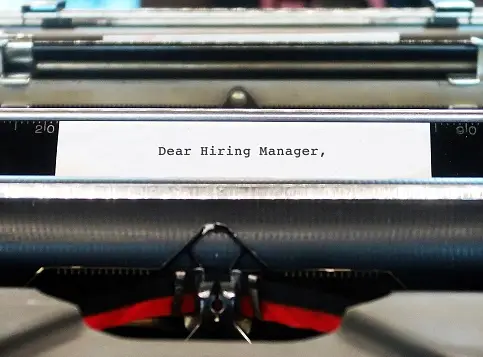READ TIME – 5 MINUTES
Did you know that 33% of hiring managers believe a well-crafted cover letter can make all the difference in separating a strong candidate from a weak one? If you want to make a lasting impression and secure that dream job, it’s time to learn how to write an impressive cover letter! Lucky for you, our blog has got you covered. We’ll walk you through all the steps you need to know to craft a standout cover letter that will have hiring managers rushing for an interview.
What Is A Cover Letter And Why Is It Important?
A Cover Letter is a document that you send along with your CV when applying for a job. These letters provide additional information to the hiring managers about why you are the perfect fit for the job. This could include details about your skills, experience, and qualifications that make you the best candidate for the position. 83% of hiring managers take the cover letter into consideration for their hiring decisions. Therefore, including a well-crafted cover letter in your job application can increase your chances of being considered!
Your cover letter is the first impression that you make on a hiring manager. That’s why around 60% of companies demand cover letters from job applicants. Even if the job posting doesn’t explicitly ask for a cover letter, it’s still a good idea to include one, as employers prefer resumes accompanied by a cover letter.
A cover letter is a brief, one-page document. According to hiring managers, the number one purpose of a cover letter is to provide additional information and context as to why a person is applying for the position. You can use a cover letter to expand on your skills and experiences that make you the best candidate for the job. To make a strong impression, align your qualifications, relevant skills, and previous experience with the job description. This shows that you have done your research and are genuinely interested in joining the company.

How To Write A Cover Letter
When writing your cover letter, you don’t need to overthink your opening. It’s best to keep it simple when beginning your cover letter, and it’s recommended to start with something such as “I’m writing to apply for your X position” or “I’m interested in your X position because…”
Throughout your Cover Letter, you must keep it to the point by using fewer words. It’s recommended that you stick with a three-paragraph format and make sure it is no larger than one page :
Paragraph 1 – Start with a to-the-point introduction stating what position you’re interested in and what spiked these interests. If you have a referral, bring up their name here.
Paragraph 2 – This is similar to an elevator pitch where you discuss your skills, accomplishments and characteristics. In this paragraph, explain why your qualifications align with the role or company.
Paragraph 3 – Finish by stating how you can add value to the organisation and thank the hiring manager for their consideration.
When discussing your accomplishments and skill set, it is more effective to “show not tell”. Instead of simply stating that you possess strong problem-solving abilities, provide an example of a time when you demonstrated your skills. This could involve reflecting on a problem and solution you identified in a previous job or your daily life and creating a more engaging and compelling paragraph that will impress potential employers.
Cover Letter Tips
- Keep it under one page – If your cover letter exceeds one page, you’re most likely writing too much. Hiring managers are unlikely to read all of it when they have hundreds of others to read. 36% of hiring managers spend less than 30 seconds reading a cover letter. On the other hand, if you’ve only written one paragraph, it’s most likely not compelling enough. This is why the 3 paragraph structure is advised.
- Don’t repeat what’s on your CV – Your cover letter should touch further than your work history, it should talk about things that make you especially well-equip for the role. For example, if the job requires a highly organised individual and you monitor your own finances in a detailed, colour-coded spreadsheet then make sure to include that in the cover letter. In this case, that’s not something you would put on your CV however, it fits perfectly in a cover letter.
- Proofread – Before sending your Cover Letter you must proofread for grammar, punctuation and spelling mistakes. You don’t want to let a silly error jeopardise your chances of a new career, so it’s best to ask a family member or friend to review it with fresh eyes after you’ve given it a polish.

Kickstart Your Career With AvA-V
After reading this blog, you’re now equipped with all the skills you need to craft a killer cover letter. With your newfound knowledge, you’ll be an even stronger candidate and can impress recruiters with an excellent cover letter.
So why wait? Let’s start searching for potential opportunities and take the first step towards your dream job today!